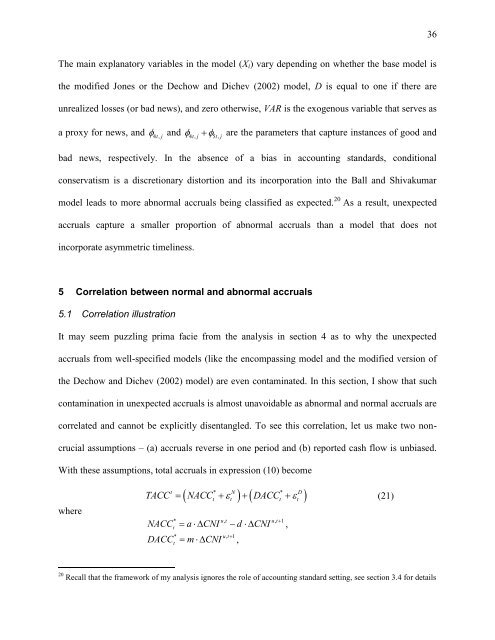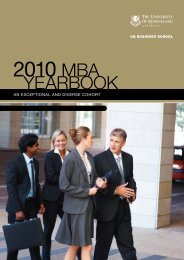Modelling the accruals process and assessing unexpected accruals*
Modelling the accruals process and assessing unexpected accruals*
Modelling the accruals process and assessing unexpected accruals*
You also want an ePaper? Increase the reach of your titles
YUMPU automatically turns print PDFs into web optimized ePapers that Google loves.
The main explanatory variables in <strong>the</strong> model (Xi) vary depending on whe<strong>the</strong>r <strong>the</strong> base model is<br />
<strong>the</strong> modified Jones or <strong>the</strong> Dechow <strong>and</strong> Dichev (2002) model, D is equal to one if <strong>the</strong>re are<br />
unrealized losses (or bad news), <strong>and</strong> zero o<strong>the</strong>rwise, VAR is <strong>the</strong> exogenous variable that serves as<br />
a proxy for news, <strong>and</strong> 4, t j <strong>and</strong> 4 t, j 5<br />
t, j<br />
are <strong>the</strong> parameters that capture instances of good <strong>and</strong><br />
bad news, respectively. In <strong>the</strong> absence of a bias in accounting st<strong>and</strong>ards, conditional<br />
conservatism is a discretionary distortion <strong>and</strong> its incorporation into <strong>the</strong> Ball <strong>and</strong> Shivakumar<br />
model leads to more abnormal <strong>accruals</strong> being classified as expected. 20 As a result, <strong>unexpected</strong><br />
<strong>accruals</strong> capture a smaller proportion of abnormal <strong>accruals</strong> than a model that does not<br />
incorporate asymmetric timeliness.<br />
5 Correlation between normal <strong>and</strong> abnormal <strong>accruals</strong><br />
5.1 Correlation illustration<br />
It may seem puzzling prima facie from <strong>the</strong> analysis in section 4 as to why <strong>the</strong> <strong>unexpected</strong><br />
<strong>accruals</strong> from well-specified models (like <strong>the</strong> encompassing model <strong>and</strong> <strong>the</strong> modified version of<br />
<strong>the</strong> Dechow <strong>and</strong> Dichev (2002) model) are even contaminated. In this section, I show that such<br />
contamination in <strong>unexpected</strong> <strong>accruals</strong> is almost unavoidable as abnormal <strong>and</strong> normal <strong>accruals</strong> are<br />
correlated <strong>and</strong> cannot be explicitly disentangled. To see this correlation, let us make two non-<br />
crucial assumptions – (a) <strong>accruals</strong> reverse in one period <strong>and</strong> (b) reported cash flow is unbiased.<br />
With <strong>the</strong>se assumptions, total <strong>accruals</strong> in expression (10) become<br />
where<br />
* *<br />
t ttt t N D<br />
TACC NACC DACC (21)<br />
NACC a CNI d CNI ,<br />
*<br />
t<br />
u, t u, t1<br />
DACC m CNI ,<br />
* ut , 1<br />
t<br />
20 Recall that <strong>the</strong> framework of my analysis ignores <strong>the</strong> role of accounting st<strong>and</strong>ard setting, see section 3.4 for details<br />
36



